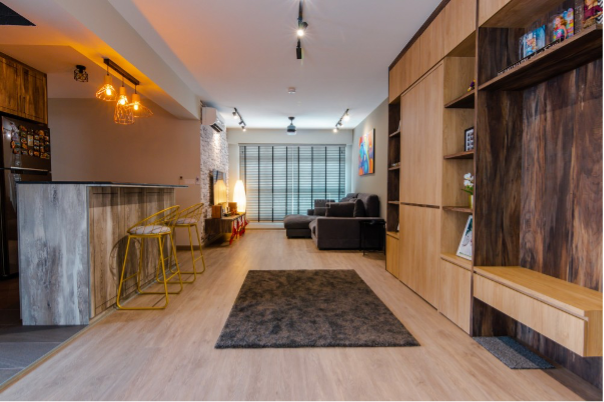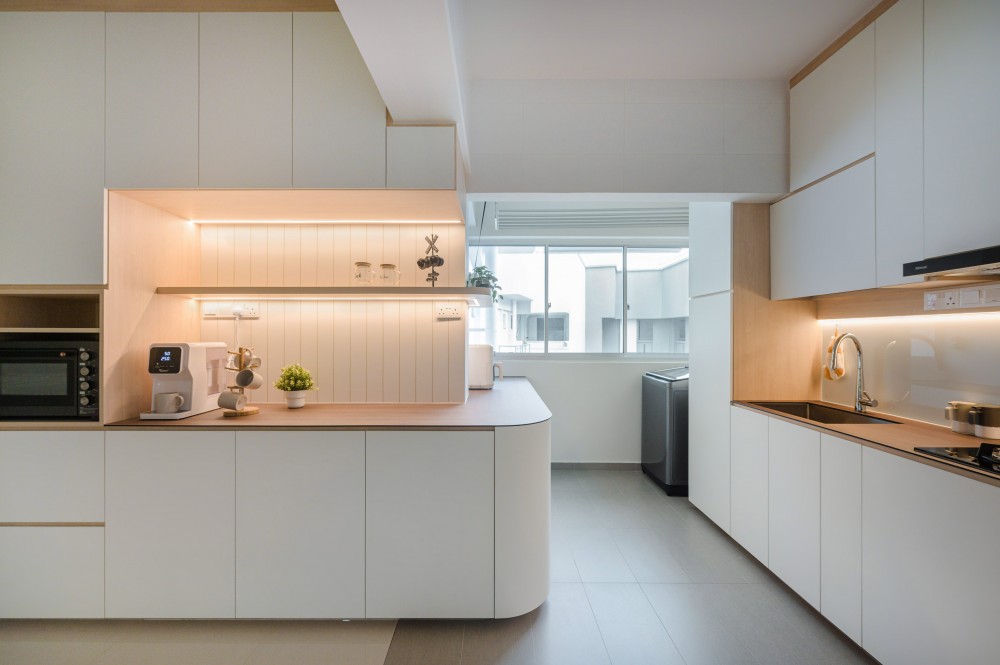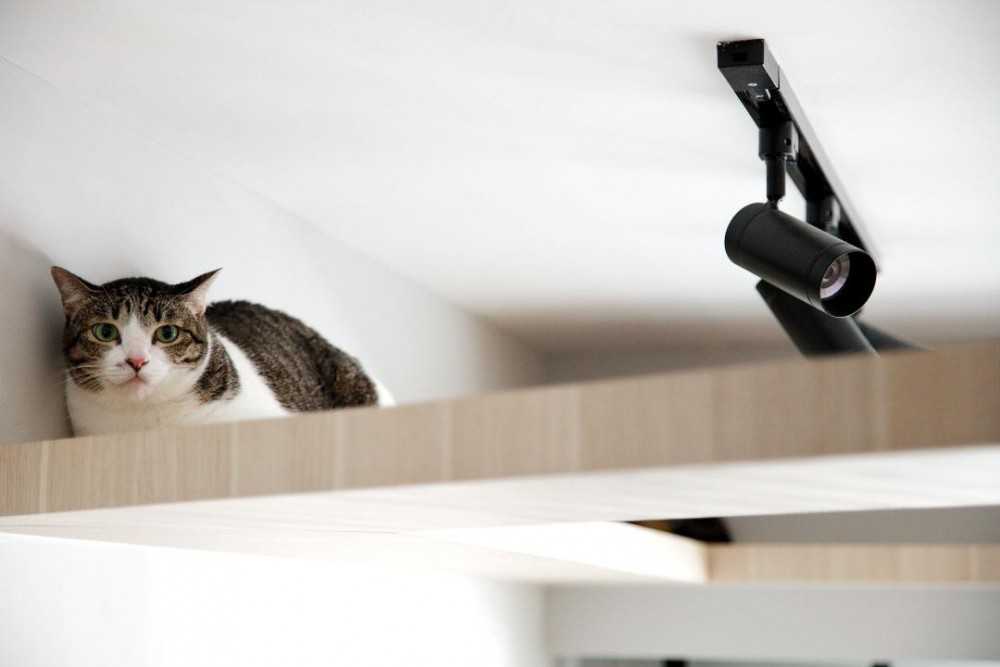How To Pick Out Furniture That’s Durable, Long-lasting, And Worth Your Dollar
If you’re looking for affordable furniture, there are tons of options available – from IKEA, to Taobao, to that random online store you found when you Googled “cheap furniture Singapore”.
But you don’t want to get a good deal on a dining table, only to have it chip so badly, you have to replace it in less than a year.
That’s why it’s important to do your due diligence, and check that your furniture is good quality!
1. Check The Frame & Hinges
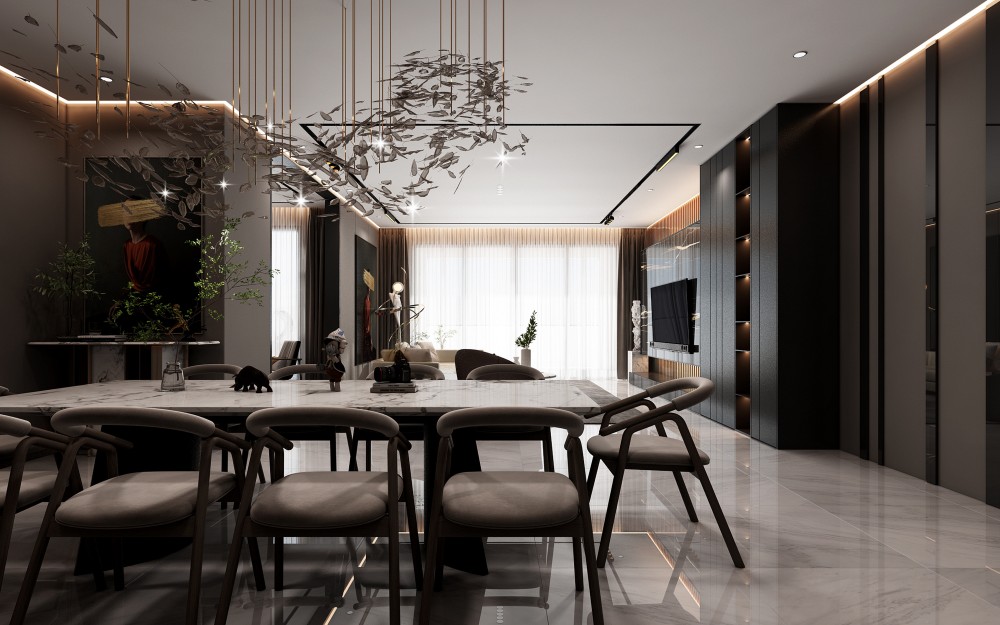

PebbleBay ($350,000) by Design Avenue
If a piece of furniture has a poorly constructed frame, it’ll have no structural integrity.
Here’s how to check if the item’s frame and hinges are well constructed:
- Sit down on chairs or couches, or apply pressure on tables and bookcases to see if they rock, squeak or wobble
- Open any doors and check the hinges to make sure everything opens and closes smoothly
- Check that the item utilises metal hinges and brackets (instead of flimsy wood or glue joints)
- Check that the hinges are securely attached
2. Check The Drawers & Cabinets
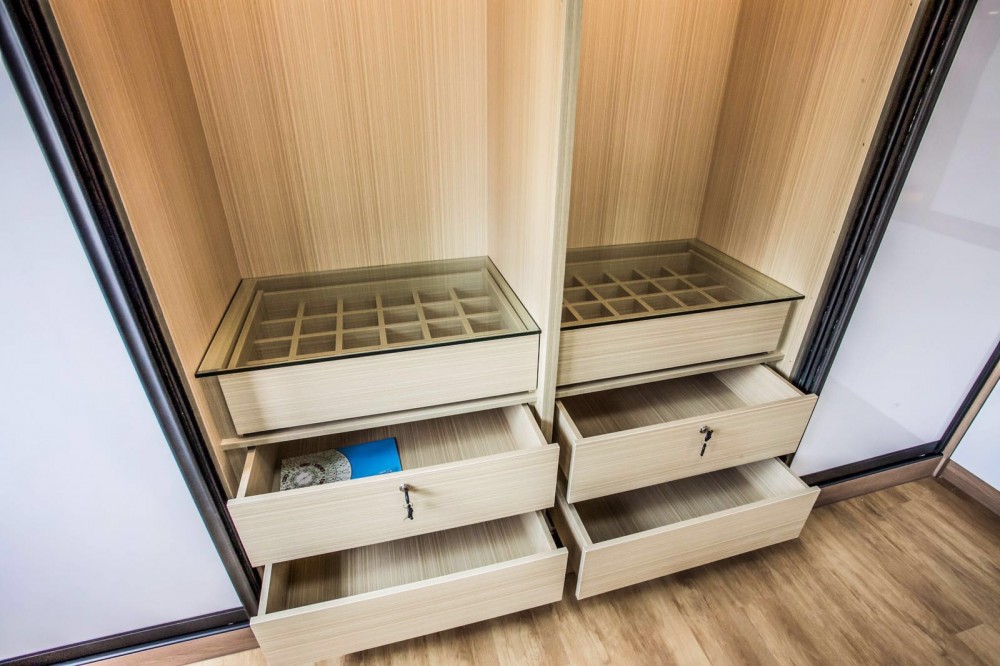

490D Choa Chu Kang ($40,000) by Elysian Design Studio
For furniture that comes with drawers and cabinets, make sure these are well-designed and can withstand the wear and tear of everyday use.
Here’s how to do so:
- Open all drawers, ensuring that they fit snugly, pull out all the way and latch properly
- Open all cabinets, ensuring that they remain open (instead of snapping shut, which means you’ll have to hold it open while trying to get something out)
- Check the handles and knobs, ensuring that they aren’t loose and do not jiggle
- Check the side and back panels of drawers – they should be at least half an inch thick
- Check the drawer bottoms, ensuring that they slip easily into the grooves, and they’re strong and sturdy enough so that they don’t sag when the drawers are filled up
- Check that the insides of drawers are smooth
- Check that there are stops to prevent drawers from being accidentally pulled out too far
3. Check The Legs
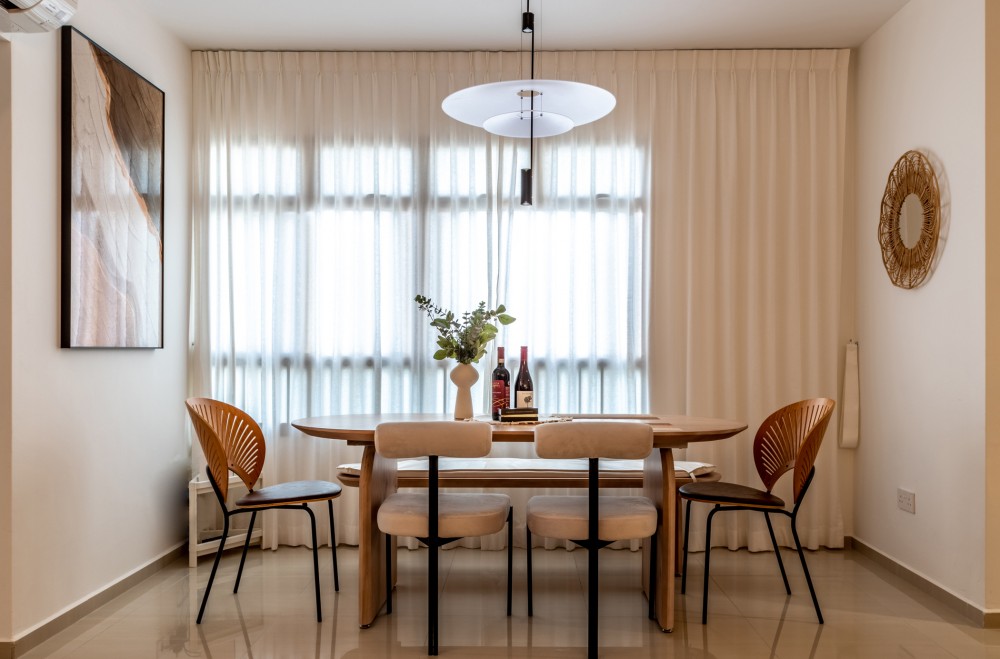

Tanglin Halt ($49,000) by U-Home Interior Design Pte Ltd
Like its frame, the legs of a piece of furniture should be well-designed and sturdily built.
Here’s how to make sure this is the case:
- Check that the furniture’s legs are either part of the frame or held using screws or dowels/pegs – they should not be glued on
- Check that the legs are not made of metal, rubber, or plastic – these materials tend to be less durable, and they might scratch your floors
- For large sofas, check that the sofa has a fifth leg integrated in the middle – this adds additional support, and makes the sofa more durable
4. Check The Fabric
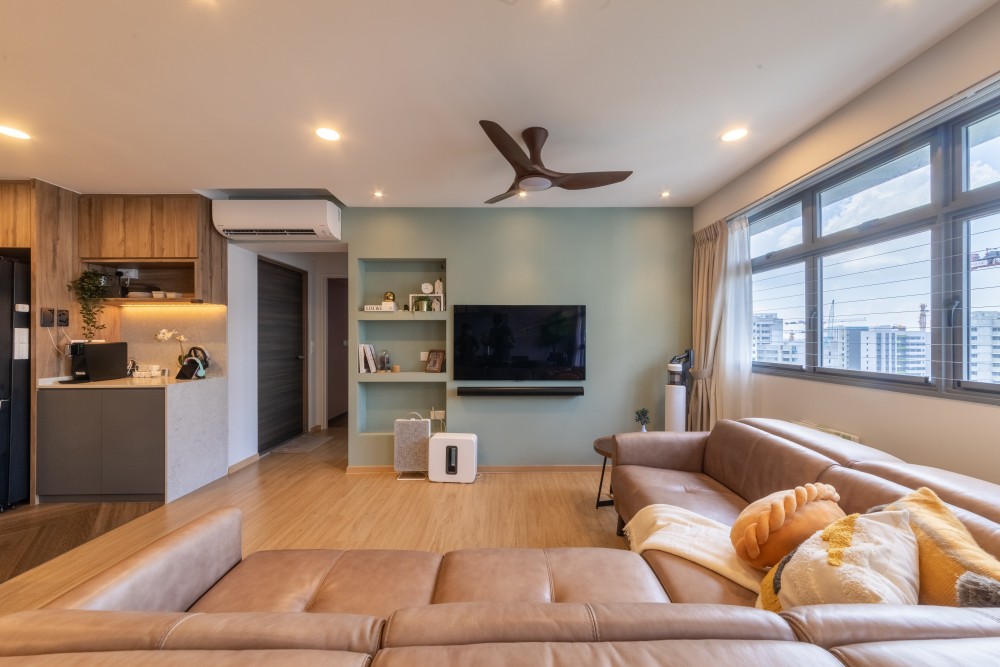

627B Tampines St 61 ($43,400) by Livspace
For sofas and chairs, there are a ton of fabric options to choose from.
Here are some materials you’ll likely encounter, and their pros and cons:
- Cotton, linen, and synthetic microfibre are generally easier to maintain and clean
- Anything that’s a blend of natural and synthetic fibers will pill
- Silk is fragile and easy to damage
- Leather is durable, but make sure you look for “genuine leather” and not bonded leather, vegan leather, or PU
Keep in mind that you don’t have to prioritise practicality every single time – it really depends on your specific use case.
For example, say you’re purchasing a sofa for your home office. If you know the sofa will only be used by you (no guests, no kids), then it’s perfectly justifiable to opt for a “higher maintenance” fabric such as silk or velvet.
Materials aside, here are some other tips for evaluating fabrics and materials:
- Fabric with woven patterns will last longer than those with printed patterns
- Avoid loose weaves, which can snag and go out of shape easily
- Smooth fabrics show wear and tear more obviously than textured fabrics
- Dark, natural fabrics may fade, and should be kept out of direct sunlight
- For those who have pets at home or suffer from allergies, avoid fluffy textures and long natural fibres, where dust, dirt, and pet hairs can easily get trapped. Go for smooth, synthetic blends instead. Canvas, denim, or outdoor fabrics are a good bet as well.
5. Check The Finishing
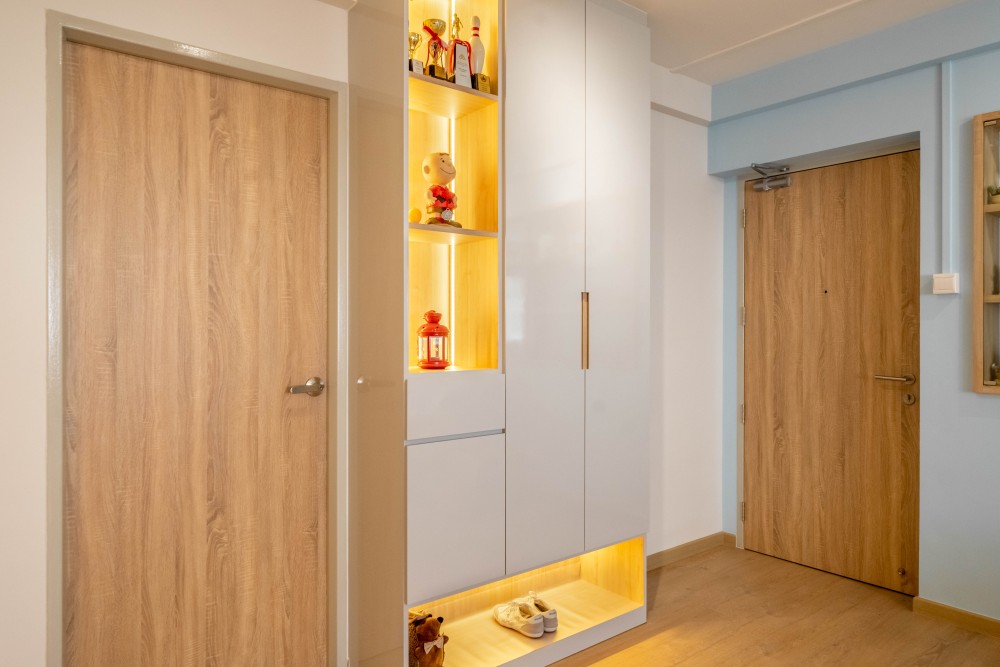

Pasir Ris | 771 Pasir Ris 71 ($66,100) by Design 4 Space Pte Ltd
If a piece of furniture isn’t finished properly, that’s usually a sign of poor craftsmanship.
Here’s what to look out for in this department:
- Run your hand against all surfaces and edges of the furniture to see if they’re smooth
- Check that there are no cracks, bubbles, or streaks of glue on the furniture
- For wooden furniture, the grain patterns and colouration should be consistent across the entire piece, including drawers and doors
6. Check That Your Wood Furniture Is Well-built
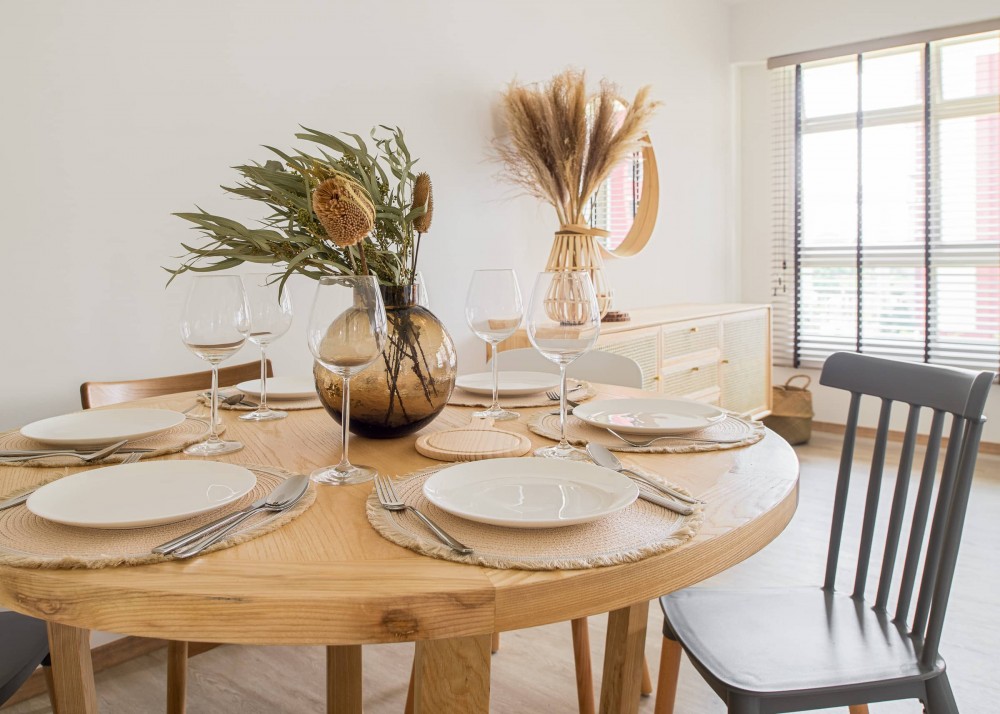

AMK Court ($95,000) by Mr Shopper Studio
There’s plenty to consider when purchasing wood furniture – for instance, is it made of hardwood or softwood? Is it solid wood, or plywood?
Once you understand what these different terms entail, this will help you gauge how hardy or durable a certain piece of wood furniture will be.
Hardwood vs softwood
As a general rule of thumb, softwood is typically low cost and low quality. If you have furniture made with soft wood, it might warp or give way after a few years. On the other end of the spectrum, hardwood is a lot more sturdy and can last longer.
A general misconception is that hardwoods are literally woods that are hard, and softwoods are woods that are soft – but that’s not actually the case. Hardwoods and softwoods are actually categorised based on the type of trees they’re from (hardwoods = deciduous trees, softwoods = coniferous trees). As such, some hardwoods may be softer than some softwoods.
Here are some examples of hardwoods vs softwoods:
| Hardwoods | Softwoods |
|---|---|
| Maple | Pine |
| Oak | White Spruce |
| Walnut | Red Cedar |
| Mahogany | Fir |
| Ash | Larch |
| Birch | Western Hemlock |
| Cherry | Yew |
| Teak | |
| Rosewood |
Type of wooden furniture
Hardwood vs softwood aside, wooden furniture can also be categorised into these broad groups:
- Composite wood (particleboard)
- Veneer
- Plywood
- Solid wood


Firstly, composite wood or particleboard is made from a combination of scrap materials, such as resin, plastics, and wood pulp. As you can imagine, furniture made with composite wood is affordable, but not long-lasting.
Then you have veneer, which is essentially when you cover a particleboard or a cheaper wood with a thin layer of higher quality wood. As compared to solid wood, veneer is slightly lower in quality; that said, you can still find many well-built veneer pieces that are made to last. Because these are topped with a thin layer of wood, they’re less prone to warping or splitting.
Next, plywood is made from several thin layers of wood that are glued together. Now, some folks will say that anything made with plywood is automatically low-quality, but that’s not necessarily the case. There is plywood that’s good quality and can last long – as long as the plywood comes with nine or more layers, it should be decent in quality.
Last but not least, there’s solid wood, which clocks in as the most expensive option. Solid wood is very durable and can be easily sanded down and restored, and because of this, solid wood pieces can be passed down through different generations. For those whose utmost priority is quality, solid wood is definitely the way to go.
7. Check The Warranty
By this point, you’ve done a thorough inspection of your furniture – you’ve checked the frame, hinges, drawers, cabinets, legs, fabric and finishing, plus identified the type of wood it’s made out of.
The only thing left to do is… check the warranty!
Of course, this isn’t a guaranteed method of gauging whether a piece of furniture is high or low quality. But generally speaking, lower-end manufacturers do not offer any warranties, or offer warranties of just one to two years.
Higher-end manufacturers, on the other hand, are able to offer longer warranties of up to ten years, because they believe in the quality of their product.
Want to check out home renovation projects for more inspiration? Browse design projects on Hometrust, or click the button below to get connected with expert designers.
Renovating soon? Speak to top rated interior designers.
Discuss your home renovation ideas and plans with top rated firms, recommended by past homeowners. Let us help you shortlist the most suitable interior designers for your project.

